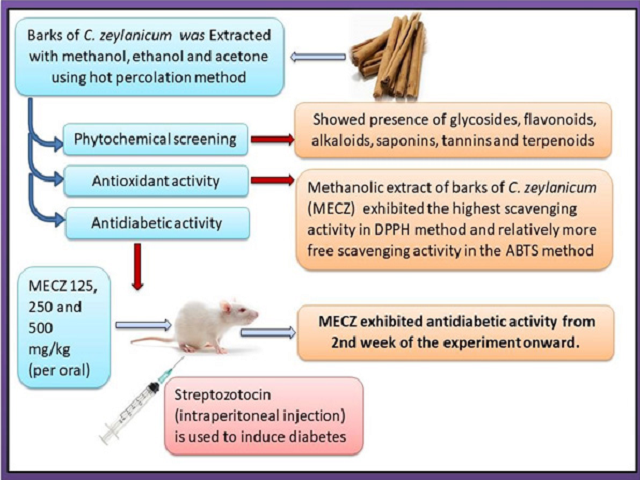Antioxidant and Antidiabetic Activities of Methanolic extract of Bark of Cinnamomum zeylanicum in Diabetic Rats
DOI:
https://doi.org/10.5530/fra.2020.1.4Keywords:
Diabetes mellitus, Free radicals, Insulin, StreptozotocinAbstract
Background: Cinnamomum zeylanicum or Ceylon cinnamon is used for the management of dyspepsia, dysmenorrhea, memory loss and tremor. It is also traditionally recommended for the management of diabetes. Further studies are required to explore the antioxidant and antidiabetic activity of various extracts of bark of C. zeylanicum. Hence, the present study is planned to investigate the antioxidant and antidiabetic activities of methanolic extract of barks of C. zeylanicum. Methods: Bark of C. zeylanicum was extracted with methanol, ethanol and acetone and its antioxidant activity was studied using 2,2-diphenyl-1-picrylhydrazyl (DPPH) and 2,2-azino-bis-3-ethylbenzothiazoline-6-sulfonic acid (ABTS) free radical scavenging assays. Acute toxic effect of methanolic extract of C. zeylanicum (MECZ) studied as per the method described in OECD Guideline for testing of chemicals (Test Guideline 423). MECZ was studied for its antidiabetic effect using streptozotocin-induced diabetic rats. Results: In both DPPH and ABTS free radical scavenging assay, methanolic and acetone extracts exhibited free radical scavenging activity, respectively. In acute toxicity testing, MECZ did not show any significant toxic signs up to 2000 mg/kg, hence the antidiabetic activity of MECZ was carried out at the dose levels of 125, 250 and 500 mg/kg. MECZ showed antidiabetic activity from 2nd week of the experiment onward. In the biochemical analysis, MECZ treated animals showed significant decreases in the levels of ALP and urea when compared with control. In lipid profile analysis, diabetic animals and diabetic animals treated glibenclamide showed significant increases in the levels of total cholesterol when compared with normal control and MECZ prevented the STZ-induced hyperlipidemia. At the end of the study, diabetic animals and diabetic animals treated with glibenclamide and MECZ showed significant decreases in the level of insulin when compared with the control group. In the histopathological analysis, sections from the liver, pancreas and kidney of the diabetic animals showed mid-to-moderate toxic effects and glibenclamide and MECZ 500 mg/kg prevented the STZ-induced cellular changes. Conclusion: The MECZ exhibited significant antioxidant and antidiabetic activities.
Downloads
Metrics





